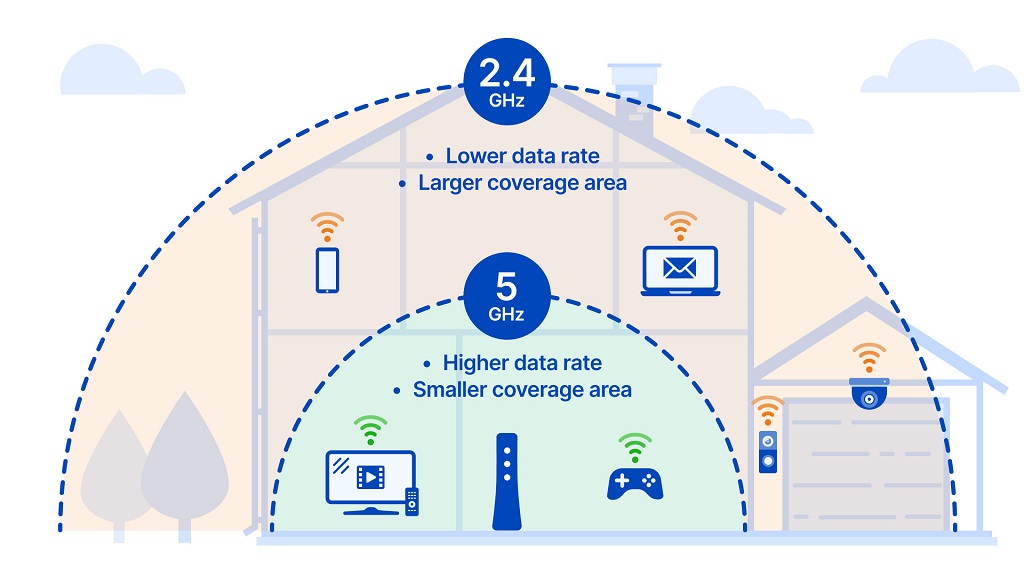Hey there, curious minds! If you’re reading this, chances are you’ve found yourself pondering over the question, “Which is the fastest 2.4 GHz option?” Well, you’re in the right place. In this tech-centric discussion, we’ll dive into the world of 2.4 GHz and explore the options that claim to be the fastest in this frequency range. So, grab your favorite beverage and let’s embark on this journey of discovery! This content is presented by Dotenvironment.net.
Unraveling the 2.4 GHz Frequency
Before we plunge into the quest for the fastest 2.4 GHz option, let’s quickly understand what this frequency is all about. In the world of wireless communication, devices often operate within different frequency bands. The 2.4 GHz frequency band has been a long-standing player in the game, commonly used for Wi-Fi connections, Bluetooth devices, and various wireless peripherals.
The Need for Speed
Now that we’re acquainted with the basics, let’s address the burning question: “Why the need for speed in the 2.4 GHz realm?” As our lives become more intertwined with technology, our appetite for faster and smoother connectivity has grown exponentially. Streaming high-definition videos, online gaming, video conferencing – all of these demand a seamless experience that hinges on a reliable and swift 2.4 GHz connection. Explore the tricks to increase internet connection speed.
The Contenders: Exploring the Fastest 2.4 GHz Options
1. Wi-Fi 6E: Taking the 2.4 GHz Band to the Next Level
You might be familiar with Wi-Fi 6, but have you heard about its enhanced version – Wi-Fi 6E? This cutting-edge technology extends the capabilities of the 2.4 GHz frequency by introducing additional channels in the 6 GHz spectrum. This expansion means less interference and more room for devices to communicate, ultimately leading to improved speed and performance.
2. Advanced Modulation Techniques: Turbocharging 2.4 GHz
One exciting way to boost the speed of 2.4 GHz devices is through advanced modulation techniques. These techniques optimize the way data is encoded and transmitted, squeezing more information into each signal. This results in a significant enhancement in data transfer rates, making your 2.4 GHz devices faster than ever before.
3. Proprietary Technologies: Unconventional Speed Champions
In the race for the fastest 2.4 GHz option, some manufacturers have developed proprietary technologies that claim to outpace traditional standards. These technologies often involve intricate signal processing algorithms and intelligent adaptive systems that can dynamically adjust to changing conditions. The result? A tailored and optimized 2.4 GHz experience that boasts impressive speeds.
Factors Affecting 2.4 GHz Speed
It’s important to remember that while the contenders above promise blazing speeds, several factors can influence the actual performance of your 2.4 GHz devices:
- Distance: The farther you are from the source, the weaker the signal and speed.
- Interference: Other electronic devices and physical obstacles can interfere with the signal, affecting speed.
- Network Congestion: A crowded network can lead to reduced speed, as devices vie for the same bandwidth.
In conclusion, the exploration of the fastest 2.4 GHz option highlights the continuous pursuit of innovation and technological advancements. This resonates with the ongoing debate about whether 5G is essential for IoT, as both domains thrive on pushing the boundaries of connectivity.
However, it’s essential to remember that real-world performance is influenced by a multitude of factors beyond just theoretical capabilities.
So, the next time you’re browsing, streaming, or gaming on your 2.4 GHz devices, take a moment to appreciate the intricacies that go into making your experience seamless and speedy.
FAQs
Q1: Is Wi-Fi 6E compatible with older devices?
A: While Wi-Fi 6E offers advanced features, it’s essential to check your device’s compatibility before upgrading.
Q2: Can I enhance my 2.4 GHz speed by using external antennas?
A: Yes, external antennas can help improve signal strength and potentially boost speed, but the overall impact may vary.
Q3: Are proprietary technologies limited to specific brands?
A: Yes, proprietary technologies are unique to the brands that develop them, so compatibility may be limited.
Q4: How can I minimize interference for better 2.4 GHz speed?
A: To minimize interference, keep your devices away from other electronic devices and objects that can obstruct the signal.
Q5: Are there any alternatives to 2.4 GHz for faster speeds?
A: Yes, the 5 GHz frequency band offers higher speeds and lower interference in comparison to 2.4 GHz, but it may have shorter range.



